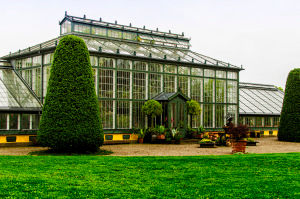GISSELFELD (SUNDAY TRIP)
- Soren Sciera

- 4. aug. 2020
- 2 min læsning
Opdateret: 7. jul. 2025
Surrounded by beautiful countryside as far as the eye can see, you’ll find Gisselfeld, with its arrow slits, machicolations and deep moats on all sides is witness to times gone by. The area around Gisselfeld is a charming mix of a classic manorial with an extravagant park with carp ponds and unspoiled nature, woods, fields and small streams.

It has been almost a year since we last visit this old monastery. But this sunday we went back, mostly because we was interested in a orchids exhibition at the Orangery, located next to the old castle.

Though it had been raining for most of the day, it was worth the visit. And on the plus side, we didn’t have to compete with other people as we where the only ones, visiting the site that day.

First mentioned at the end of the 14th century
Gisselfeld is first mentioned at the end of the 14th century when the owner was Bo Falk. At that time, there was a small manor situated some 2 km northwest of the site of today’s main building. It stood next to an older fort, possibly the now demolished Valgestrup.

Today’s estate was founded by Peder Oxe til Nielstrup who built the manor from 1547 to 1575. It originally consisted of four interconnected red-brick wings, three storeys high with thick outer walls, a number of loopholes and large stepped gables. A protruding gate tower stands at the centre of the left wing. The fourth wing, now demolished, housed a chapel.

After a short period of ownership by the Crown, in 1670 the property was presented to Count Hans Schack as a reward for the part he played in the Swedish wars. In 1688, his son Otto Diderik sold the estate to Adam Levin Knuth whose family maintained ownership until 1699, when Christian V‘s illegitimate son took it over.
As a result of his will, on his death in 1703 the manor building should have become a convent. But this did not happen until the death of his widow Dorothea Krag in 1754 extinguished her dower rights.

Since 1755, under the name of Danneskiold-Samsøe his descendants have run the estate as “Gisselfeld Adelige Jomfrukloster I Sjælland” (Gisselfeld Convent in Zealand for Virgins of Noble Birth). The 11th in line Helene Danneskiold-Samsøe, has since 2010 been running Gisselfeld.

Info
The park and Orangery are open everyday from kl. 10-17.
Find on GoogleMaps:




Kommentarer